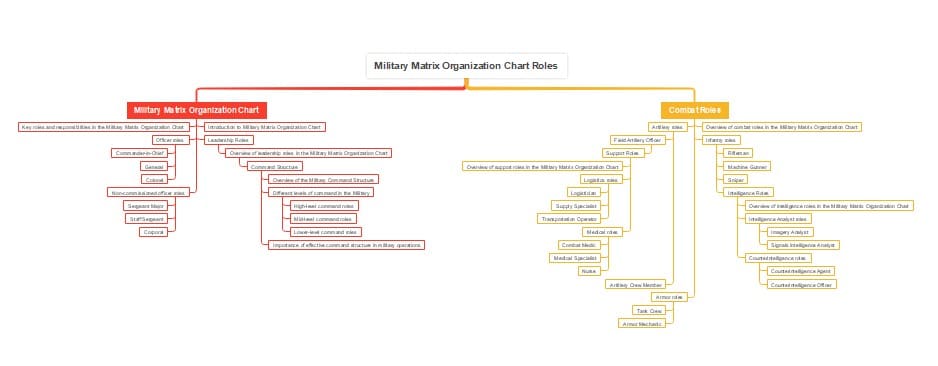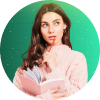
Organizational charts are indispensable tools within the military, offering a comprehensive visual representation of command structures, roles, and relationships critical for operational success. They provide a clear roadmap, illustrating the hierarchy that guides decision-making and action on the battlefield. Each position within the military organizational chart is meticulously positioned to reflect the interconnectedness of units and branches.
Understanding military organizational charts is paramount for military readiness and effectiveness as foundational tools for planning and executing missions. They ensure coherence and unity of effort across diverse units of operation, fostering operational efficiency and command effectiveness. By dissecting these charts, one can gain insights into the dynamic nature of military operations. Continue reading below to learn more.
What is the Military Organizational Chart
A military organizational chart is a graphical representation that outlines the hierarchical structure, roles, and relationships within the armed forces. It presents a visual framework depicting the chain of command, from the highest-ranking officers to the lowest-ranking enlisted personnel, and illustrates the formal lines of authority and communication.
Importance
Military organizational charts play a pivotal role in the armed forces, clearly depicting structure and function. They serve as foundational tools that ensure efficient communication, strategic planning, and alignment with mission objectives. Key aspects of their importance include the following.
1. Clarity and Understanding
Military organizational charts provide clarity and understanding of the structure and functioning of the armed forces. They offer a clear visual depiction of command arrangements, reporting lines, and decision-making processes.
2. Efficient Communication and Coordination
These charts facilitate efficient communication and coordination among military personnel by outlining the distribution of responsibilities and authority. They ensure that all units and individuals understand their roles and responsibilities within the organization.
3. Strategic Planning and Resource Allocation
Military organizational charts aid in strategic planning and resource allocation by helping military leaders identify key personnel, units, and divisions. They assist in aligning resources with mission objectives and optimizing operational efficiency.
4. Training and Preparedness
Organizational charts support training initiatives and enhance preparedness by providing a comprehensive overview of the military structure. They help develop training programs that align with the organization's goals and ensure that personnel are adequately prepared for their roles.
5. Alignment with Mission Objectives
Military organizational charts ensure that all units and personnel are aligned with the overarching mission and objectives of the armed forces. They help maintain cohesion and unity of effort, even in complex and dynamic operational environments.
Military Organizational Chart Templates
Below are three military organizational chart templates, each designed to meet specific organizational needs within the armed forces:
Traditional Hierarchical Structure

This template follows a traditional hierarchical structure, depicting a clear chain of command from top-ranking officers to lower-ranking personnel. It includes distinct levels of command, such as generals, colonels, captains, sergeants, and privates, illustrating the formal lines of authority and communication. Branches and specialized units are organized under their respective commands, providing a comprehensive overview of the entire military organization.
Functional Division Structure

This template focuses on functional divisions within the military, such as logistics, intelligence, operations, and administration. It highlights the roles and responsibilities of each division, showcasing how they contribute to overall mission success. Cross-functional collaboration and coordination are emphasized, demonstrating how different divisions work together to achieve common objectives.
Matrix Organization Structure

This template presents a matrix organization structure, combining elements of hierarchical and functional division structures. It allows for greater flexibility and adaptability with personnel from multiple command chains or functional divisions. This structure is particularly useful for complex military operations requiring close coordination between units and branches.
Each of these templates provides a unique perspective on military organizational structure, catering to different organizational needs and operational requirements within the armed forces.
EdrawMind: Simple Organizational Chart Maker

Creating military organizational charts is easy. Utilizing specialized tools like EdrawMind can significantly streamline the process. EdrawMind offers a simple and intuitive platform for designing various diagrams including organizational charts, providing a range of templates and customization options tailored to the needs of military organizations.
Creating an organizational chart with EdrawMind is a straightforward process that involves several intuitive steps. Here's a detailed elaboration on how to create an organizational chart using EdrawMind:
Step1Access EdrawMind

Download EdrawMind or try it online. Sign in with an account on Wondershare, Google, Facebook, or Twitter.
Step2Choose a Template

Browse through the available templates or start with a blank canvas. For a military organizational chart, you can select a template specifically designed for this purpose or choose a general organizational chart template and customize it to suit your needs.
Step3Add Shapes and Text

Drag and drop shapes onto the canvas to represent different positions within the military hierarchy. Typically, you'll use rectangles or squares to connect individual positions and lines, indicating reporting relationships.
Step4Customize the Chart

Customize each shape by adding text to represent the title or rank of each position. You can also adjust the size, color, and style of the shapes to differentiate between different levels or branches within the military.
Step5Arrange and Connect Shapes

Arrange the shapes on the canvas to reflect the hierarchical structure of the military organization. Use connectors or lines to indicate reporting lines and relationships between different positions.
Step6Add Details

Add additional details, such as names, photos, or descriptions, to each position to provide more information about the roles and responsibilities associated with them.
Step7Review and Finalize

Review the organizational chart to ensure accuracy and clarity. Make any necessary adjustments or revisions before finalizing the chart.
Step8Save and share

Once satisfied with the organizational chart, save it to your EdrawMind account or download it as a file to share with others or integrate into presentations or documents.
By following these steps, you can easily create a military organizational chart using EdrawMind's simple and user-friendly interface, allowing you to visualize the structure and hierarchy of the armed forces with ease.
Conclusion
Military organizational charts are indispensable tools within the armed forces, providing clear visual representations of command structures, roles, and relationships critical for operational success. These charts clarify the chain of command, facilitate efficient communication and coordination, and aid in strategic planning and resource allocation.
As we've explored, EdrawMind offers a user-friendly platform for creating organizational charts, simplifying the process, and ensuring accuracy and clarity. With its range of templates and customization options, EdrawMind empowers military personnel to design detailed and comprehensive organizational charts tailored to the specific needs of their units and branches.




